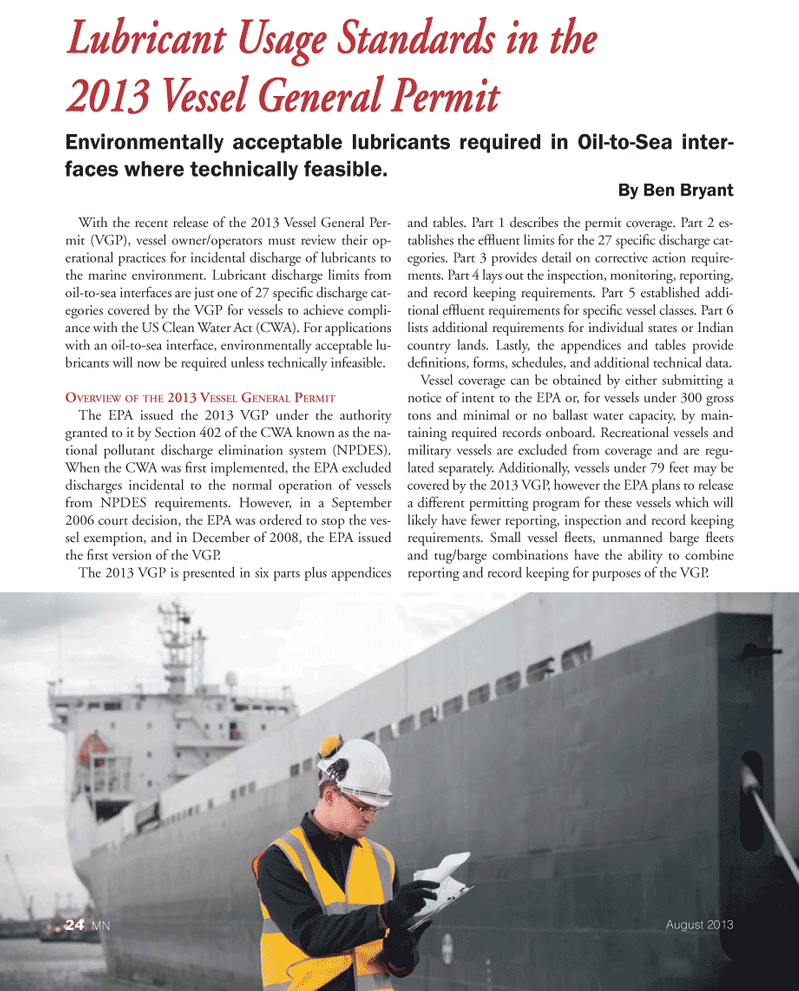
Page 24: of Marine News Magazine (August 2013)
Salvage & Response
Read this page in Pdf, Flash or Html5 edition of August 2013 Marine News Magazine
With the recent release of the 2013 Vessel General Per- mit (VGP), vessel owner/operators must review their op- erational practices for incidental discharge of lubricants to the marine environment. Lubricant discharge limits from oil-to-sea interfaces are just one of 27 speci? c discharge cat- egories covered by the VGP for vessels to achieve compli- ance with the US Clean Water Act (CWA). For applications with an oil-to-sea interface, environmentally acceptable lu- bricants will now be required unless technically infeasible. OVERVIEW OF THE 2013 V ESSEL GENERAL PERMITThe EPA issued the 2013 VGP under the authority granted to it by Section 402 of the CWA known as the na- tional pollutant discharge elimination system (NPDES). When the CWA was ? rst implemented, the EPA excluded discharges incidental to the normal operation of vessels from NPDES requirements. However, in a September 2006 court decision, the EPA was ordered to stop the ves- sel exemption, and in December of 2008, the EPA issued the ? rst version of the VGP. The 2013 VGP is presented in six parts plus appendices and tables. Part 1 describes the permit coverage. Part 2 es- tablishes the ef? uent limits for the 27 speci? c discharge cat- egories. Part 3 provides detail on corrective action require- ments. Part 4 lays out the inspection, monitoring, reporting, and record keeping requirements. Part 5 established addi- tional ef? uent requirements for speci? c vessel classes. Part 6 lists additional requirements for individual states or Indian country lands. Lastly, the appendices and tables provide de? nitions, forms, schedules, and additional technical data. Vessel coverage can be obtained by either submitting a notice of intent to the EPA or, for vessels under 300 gross tons and minimal or no ballast water capacity, by main- taining required records onboard. Recreational vessels and military vessels are excluded from coverage and are regu- lated separately. Additionally, vessels under 79 feet may be covered by the 2013 VGP, however the EPA plans to release a different permitting program for these vessels which will likely have fewer reporting, inspection and record keeping requirements. Small vessel ? eets, unmanned barge ? eets and tug/barge combinations have the ability to combine reporting and record keeping for purposes of the VGP. Lubricant Usage Standards in the 2013 Vessel General Permit Environmentally acceptable lubricants required in Oil-to-Sea inter- faces where technically feasible. By Ben Bryant August 201324 MNMN August2013 Layout 18-31.indd 247/23/2013 7:17:05 PM

 23
23

 25
25
